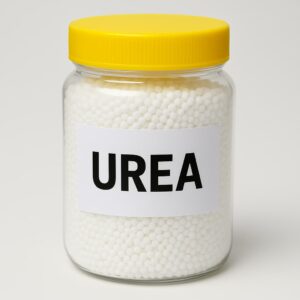
Urea
Urea, also known as carbamide, is a colorless, odorless, and highly water-soluble organic compound with the chemical formula CO(NH₂)₂. It is the most common nitrogen fertilizer used worldwide and plays a key role in agriculture and industry.
Key Properties of Urea
Molecular Formula: CO(NH₂)₂
Molar Mass: 60.06 g/mol
Appearance: White crystalline solid
Nitrogen Content: ~46% (highest among solid nitrogen fertilizers)
Solubility: Highly soluble in water
Melting Point: ~133°C
Production of Urea
Urea is synthesized through the reaction of ammonia (NH₃) and carbon dioxide (CO₂) under high pressure and temperature, typically as part of the Haber-Bosch process:
2NH3+CO2→(NH2)2CO+H2O2 NH₃ + CO₂ → (NH₂)₂CO + H₂O
Types of Urea (by Use or Form)
1. Agricultural Urea (Fertilizer Grade)
Most widely used nitrogen fertilizer globally
Typically granulated or prilled for ease of handling and application
Enhances crop yield by providing essential nitrogen for plant growth
Often used with urease inhibitors or coated (slow-release) forms to reduce nitrogen loss
2. Industrial Urea
Used in a variety of industrial applications, including:
Resins and adhesives (e.g., urea-formaldehyde resins)
Diesel Exhaust Fluid (DEF) (also known as AdBlue): helps reduce NOx emissions from diesel engines
Plastic and rubber manufacturing
Textiles and dyeing
3. Feed-Grade Urea
Added to animal feed (especially for ruminants like cows) as a non-protein nitrogen source
Requires careful dosing to avoid toxicity
Advantages of Urea
High nitrogen content (46%)
Cost-effective and easy to store
Quickly dissolves in water
Compatible with many other fertilizers
For more information on Urea, click here.

